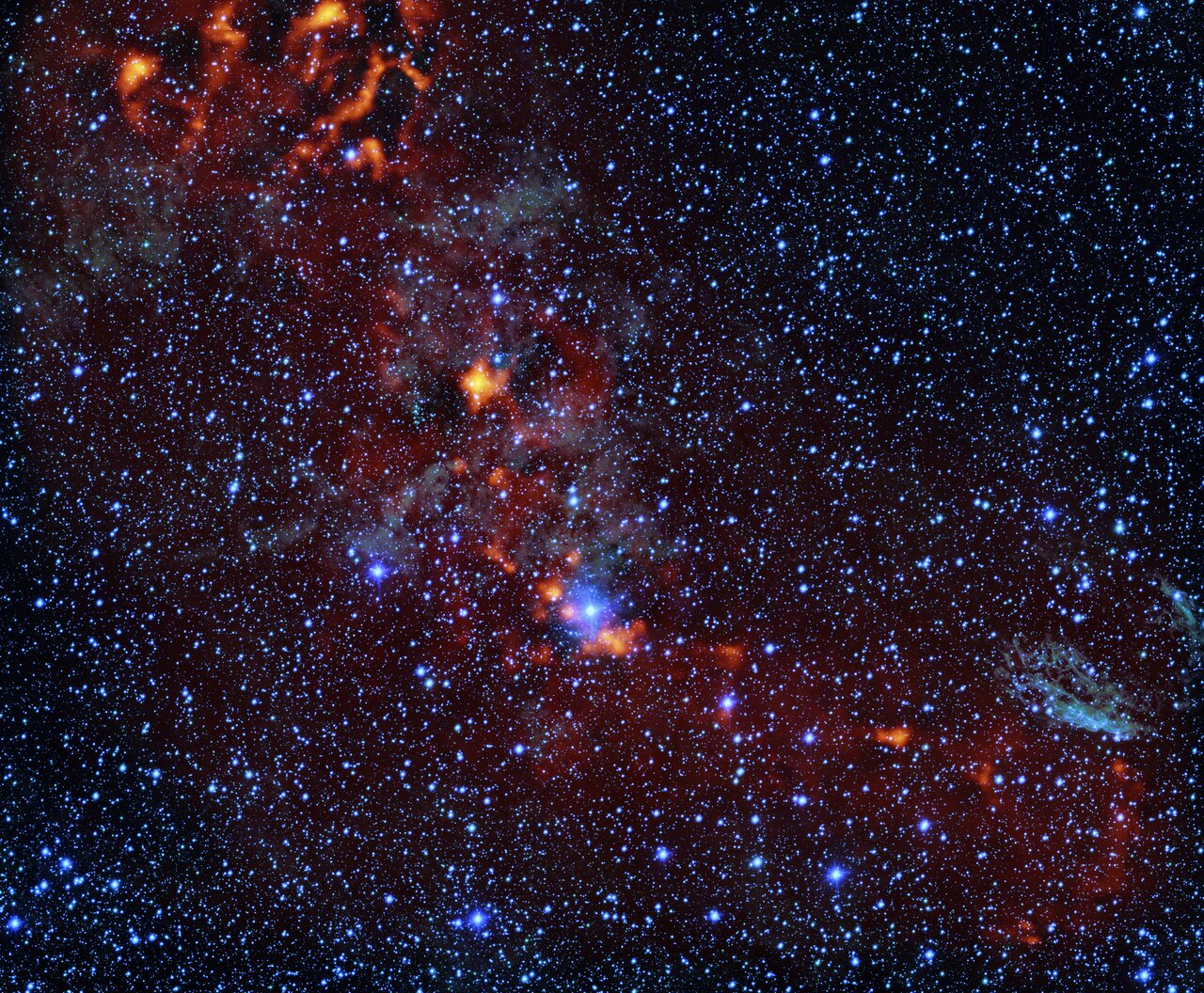Cosmos RCW 106
The glowing red clouds seen in this Picture of the Week show dense gas regions where new stars are being born in the RCW 106 region. But only 1% of this gas will actually go on to create stars, and astronomers don’t know why this percentage is so low. We do know that star formation takes place when regions of these huge clouds of cold gas are able to clump together and eventually collapse into newborn stars, which happens at a critical density. But once we go past that density, do even denser regions produce even more stars, and could this help to explain the 1% mystery? New results from the Atacama Pathfinder Experiment (APEX), accepted for publication in Astronomy & Astrophysics (link accessible from 20 August), suggest this is not the case: denser regions are not more efficient at forming stars. This is perhaps explained by the way these denser clouds fragment into filamentary structures and cores out of which stars will form, but leaves many questions still to be answered. This Picture of the Week highlights these areas of interest. The image imposes a red map of dense gas, imaged with the ArTéMiS camera at APEX, over an optical image taken with the VLT Survey Telescope. While APEX continues to investigate this stellar mystery, we can expect to see many more stunning images like this.
